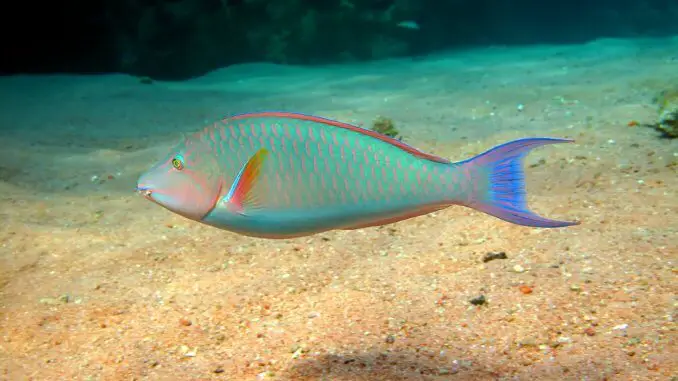
Parrotfish are a family of fish known for their bright colors and fused teeth.
They are arguably the most important fish in the Caribbean coral reefs as they keep the reef clean.
These saltwater fish get their name due to their beak like jaws, and beautiful bright colors, much like the parrot.
In this article we’ll take a look at some of the most popular species of parrotfish, the roles these fish play in the ocean, parrotfish poop and much more.
TABLE OF CONTENTS
An Introduction to Parrotfish
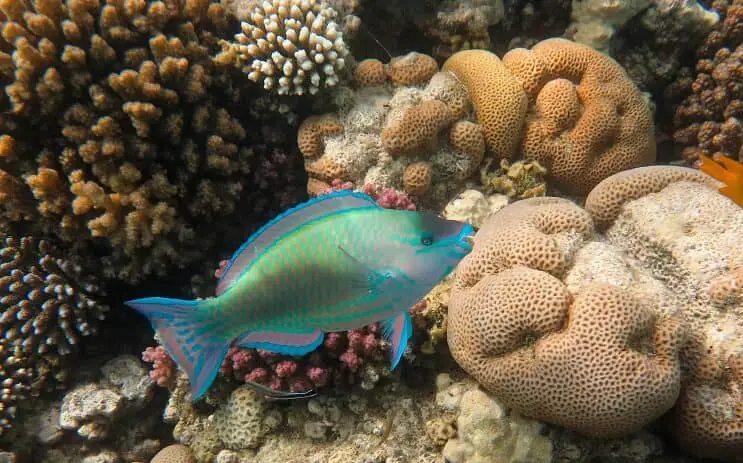
Parrotfish are a group of marine fish which typically live in the shallow waters of tropical oceans – however some species do live in sub-tropical oceans.
They belong to the Scaridae family and there are currently around 80 identified species.
You will usually find them in coral reefs, seagrass beds, and rocky coasts. They are well known to divers for a few reasons:
- Their incredible coloration.
- Loud crunching noises whilst they eat.
Another two reasons these fish are so integral to the ocean:
- They help maintain coral reefs by eating the algae which grows all over them.
- They are sand making machines (more on this shortly).
Most Popular Types of Parrotfish
There are over 80 recognized species. They come in all different shapes, sizes, and colors but the main characteristic which they all share is their protruding fused teeth.
Humphead Parrotfish
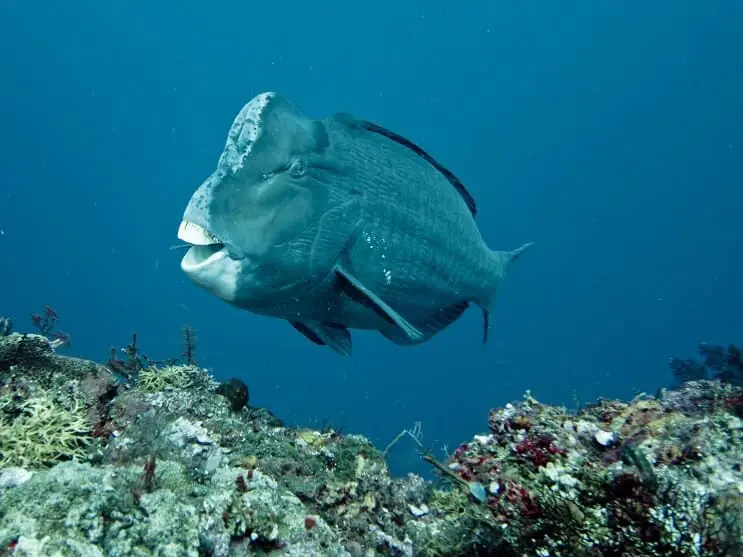
The green humphead (Bolbometopon muricatum) is the largest species of the species and can grow up to 51 inches and weigh up to 100lbs.
Males and females both look the same, and as juveniles they start their life with green/brown bodies which have five vertical white spotted bands along the length of their body.
As they mature, they develop a large bump on their head, and their color turns bluish-green/grey with a pinky-yellow stripe on the front of their face.
This species is categorized as vulnerable on the World Conservation Union’s “Red List of Threatened Species”.
Blue Parrotfish
This fish (Scarus coeruleus) is all blue in color with a yellow spot on their head — this spot fades as they age.
They are the only ones to have this uniform blue color as adults. As they mature, they reach lengths of between 12 to 30 inches, with males typically being larger than the females.
This fish is found in the tropical and subtropical parts of the western Atlantic Ocean and Caribbean Sea.
Rainbow Parrotfish
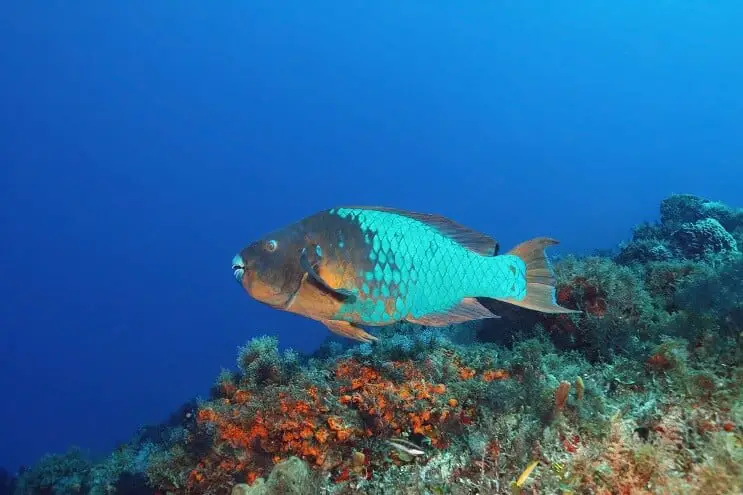
The rainbow parrotfish, known scientifically as Scarus guacamaia, can reach up to 47 inches in length and weigh up to 45lbs.
They are greenish-brown in color with dull orange and green fins. Their dental plates are also greenish in color. Males and females both look very similar and they usually live for up to 16 years.
This fish is quite rare and their population is slowly on the decline. On the IUCN Red List of Threatened Species they are described as near-threatened.
Stoplight Parrotfish
The stoplight (Sparisoma viride) grows to between 12-18 inches and is usually found in coral reefs throughout Bermuda, Florida, Caribbean Sea, Gulf of Mexico, and as far south as Brazil. As a juvenile the fish looks a lot different to the matured adult.
In the initial phase they are red and white, and can rapidly change the color of their scales on the underside of their body.
They get their name from the yellow spot near their pectoral fin, which is only visible once fully matured.
Princess Parrotfish
The princess parrotfish, also known as Scarus taeniopterus, are normally found in large groups foraging for food among coral and rocky reefs which are rich in algae growth.
Terminal phase fish have bluey-green bodies with two blue/green stripes over their snout.
Their tail is bordered with yellow, orange or pink, and they have a yellow/orange stripe on their mid-body, which fades out towards their rear.
Initial phase fish have brown bodies with dark stripes which fade into a brown color as they mature. Their fins also become yellow as they mature, with a dark bordered tail. As juveniles they have a stripy body with three black stripes and two white ones. They have a white belly with thin silver stripes.
Keeping Parrotfish in Aquariums
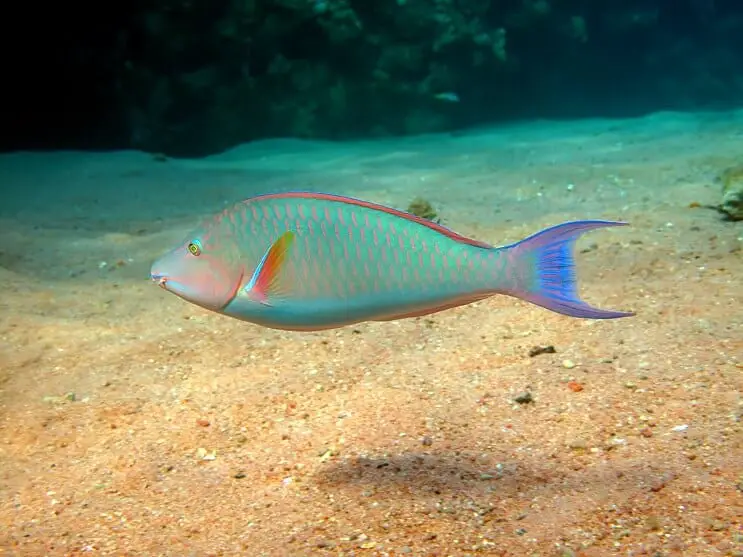
You might think that these fish would make the dream aquarium fish, given their beautiful coloration and their perfectly shaped bodies.
However, it’s not recommended you keep them in an aquarium for a few reasons.
Firstly, they are vital for the ecosystem in the Ocean. They are essential in maintaining coral reefs and without them, coral reefs would cease to exist.
Secondly, they do not adapt well to captive life. They live for a much shorter length of time when kept in an aquarium.
They require a very specific diet which most tanks just aren’t set up to give them. Unfortunately they are also very susceptible to stress, which leads to disease. There are a few species which have been kept in aquariums, such as the queen (Scarus vetula), the spotlight (Sparisoma viride), and the bicolor parrotfish (Cetoscarus bicolor).
However, even these fish should not be kept in home aquariums. They will only survive in well established public aquariums.
How Parrotfish Keep Reefs Clean
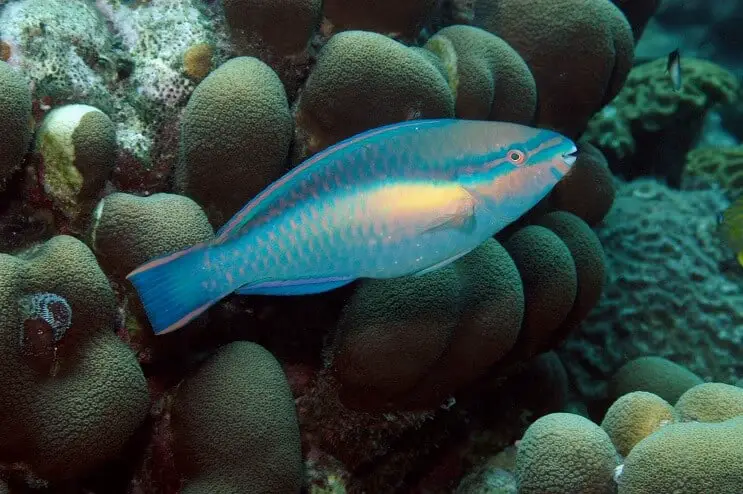
They play a vital role in maintaining the health of coral reefs. They do this by removing the algae which competes with the reef and destroys it.
Not only do these amazing fish protect the coral, but it’s been proven that coral reefs grow faster and stay healthier the more parrotfish there are in the area.
They are mostly herbivorous, using their powerful teeth to rip off chunks of coral from the reef, and then extract the algae. It is thought that less than 1% of these fish actually bite into live corals and instead prefer algae covered surfaces.
Many species spend up to 90% of their time foraging. Reefs are being overrun with seaweed and algae overgrowth which is smothering and poisoning the corals. As these fish graze, they remove the algae and allow the coral to grow freely.
By eating the algae, they prevent algae blooms which can lead to coral bleaching and results in the coral dying.
Parrotfish can be split into three main groups, each having different functions. Some are excavators, some are scrapers and others are browsers.
Excavators have large, strong jaws to excavate the substrate; they leave visible scrapes and scars on corals and rocks. Scrapers have less powerful jaws and infrequently leave visible scrapes, and browsers mainly just feed on seagrasses.
Parrotfish are critical in maintaining reefs, and there is an urgent need to restore their populations.
There have been some changes to protect populations. Some waters have been protected, and prohibit the use of fishing traps.
Interesting Facts about Parrotfish
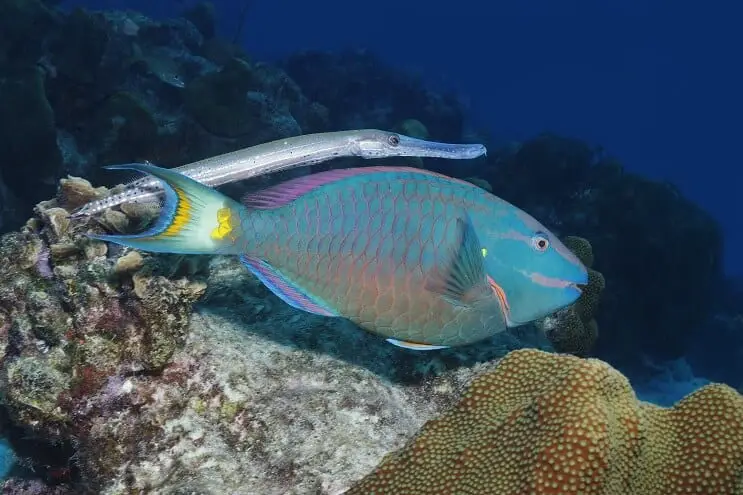
- They are the largest herbivorous fish in the Atlantic.
- It’s thought that most Caribbean reefs will have disappeared within 20 years if grazing fish, such as parrotfish, aren’t protected and reestablished.
- Some species excrete mucus every night which acts like a sleeping bag! It takes them around 30 minutes to make, and is foul smelling in order to deter predators, such as moray eels.
- They are eaten as a delicacy in some countries.
- These fish can form large foraging groups of up to 500 while they spawn and feed.
- They can cause ciguatera fish poisoning, some fish carry a toxin which can’t be destroyed through cooking, freezing or stewing.
- Most species live for less than 5 years; however, the largest species (Bolbome-topon muricatum) can live until around 20 years.
Parrotfish Poop and Teeth
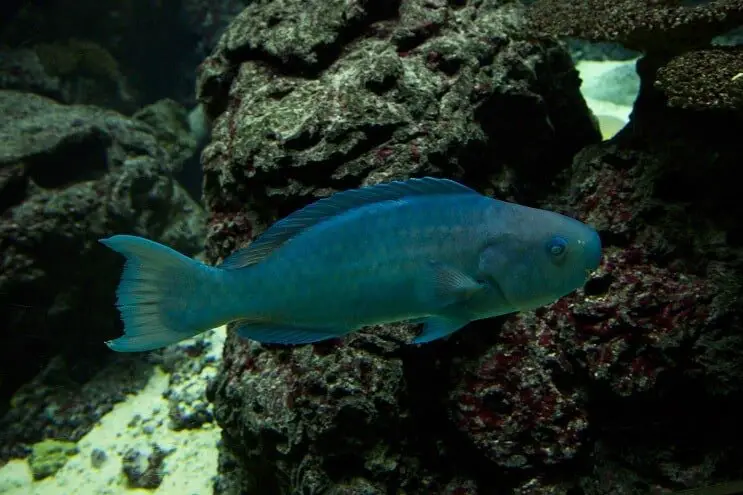
Parrotfish use their teeth and pharyngeal teeth to grind up the rocks and coral which they then ingest.
Rocks and coral can be extremely hard so it goes without saying that their teeth are some of the strongest and hardest on the planet!
They have more than 1000 teeth in 15 rows, which are continuously growing. They are fused together, to form a beak like mouth (just like a parrot).
Their teeth are made of the second hardest bio-mineral, fluorapatite. Fluorapatite scores a five on the Mohs Hardness Scale, which makes them tougher than silver and gold.
Once the fish have taken a bite of coral, they will digest all the nutritious and edible parts; the bits they don’t need pass through, and will be excreted as sand.
Sand is the result of broken down rocks from many different places. Some beaches have tan colored sand from the rocks they’ve broken down from; others have black sands from eroded volcano matter. The white sand in Hawaii and surrounding areas mostly comes from parrotfish poop!
The species determines how much sand they make, but a large parrotfish can produce more than 1000lbs of sand every year!
Changing Sex
Parrotfish have one of the most complex and interesting reproductive techniques in the world.
Some fish are born male (they are known as primary males), others are born female and make the change to male (secondary males), and others remain female for their entire life. Some species don’t have secondary males, and others do.
To complicate things further, some species have both primary and secondary males. These species go through three very distinct phases.
- The first phase is when they are sexually immature; these juveniles are usually dull in color.
- The second phase, known as the initial phase, includes sexually mature males and females which are impossible to sex without internal examination or close observation during spawning.
- The terminal phase includes mature males which have bright and brilliant colors.
Parrotfish usually live in harems with one terminal phase fish as the dominant male. When this fish dies, one of the second phase fish will change sex and behavior and become the new dominant male.
Sometimes, initial phase males will mimic themselves as a female and attempt to join a harem in order to try and fertilize eggs and take over.
Their type of reproductive behavior, whether they breed in pairs, groups, or mass spawning, is very complex and dependent on their environment, behavior and geographical factors.
Summary
Parrotfish are one of the most fascinating and integral parts of ocean life.
Not only are they very unique looking and colorful fish, but they play an important role in maintaining coral reefs and creating sand.
They also have one of the most complex reproduction systems known, accompanied by a series of color changes.
It is important however, that we only observe this incredible fish from afar, it is vital to the reefs in our Oceans.
What is your favorite thing about the parrotfish? Let us know in the comments section below…

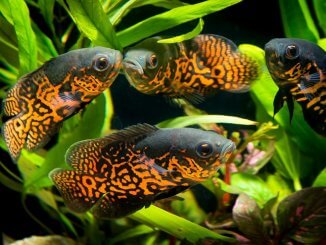
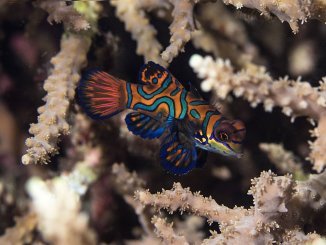
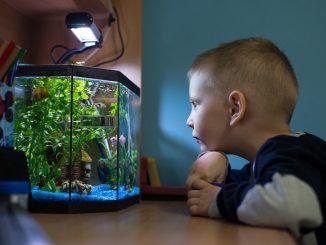
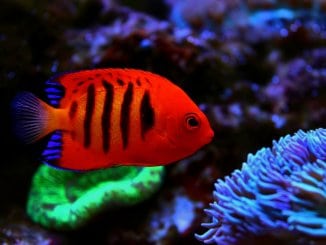
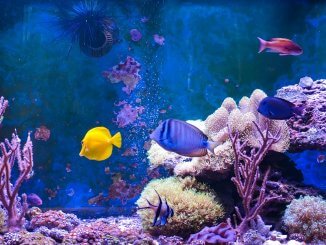
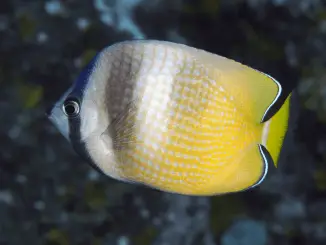
What great advice to avoid keeping in home aquariums.
Some creatures just need to be left in their natural habitat.
Fortunately there is still a huge range of species that are suitable for home fish keepers.
I have seen rainbow parrot fish off the island of Cozumel, Mexico. What a beautiful, amazing fish.